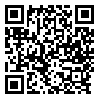Volume 16, Issue 6 (November & December- In Press 2025)
BCN 2025, 16(6): 0-0 |
Back to browse issues page
Download citation:
BibTeX | RIS | EndNote | Medlars | ProCite | Reference Manager | RefWorks
Send citation to:



BibTeX | RIS | EndNote | Medlars | ProCite | Reference Manager | RefWorks
Send citation to:
Sadeghi H S, Rezaei Tavirani M, Abrishami M, Hamzeloo-Moghadam M. Flaxseed (Linum usitatissimum) Modulates Oxytocin Signaling Pathway via CALM3-Mediated Calcium Signaling: A PPI Network and Functional Enrichment Analysis. BCN 2025; 16 (6)
URL: http://bcn.iums.ac.ir/article-1-3232-en.html
URL: http://bcn.iums.ac.ir/article-1-3232-en.html
1- Traditional Medicine and Materia Medica Research Center, Department of Traditional Pharmacy, School of Traditional Medicine, Shahid Beheshti University of Medical Sciences, Tehran, Iran.
2- Proteomics research center, Faculty of Paramedical Sciences, Shahid Beheshti University of Medical Sciences, Tehran, Iran.
2- Proteomics research center, Faculty of Paramedical Sciences, Shahid Beheshti University of Medical Sciences, Tehran, Iran.
Abstract:
Purpose: This study aimed to elucidate the molecular mechanism underlying the anti-anxiety effects of flaxseed (Linum usitatissimum) by investigating its role in modulating the oxytocin signaling pathway through protein-protein interaction (PPI) network analysis.
Methods: Gene expression profiles from the GEO dataset (GSE36422) were analyzed to identify flaxseed-induced differentially expressed genes (DEGs). Bioinformatics tools, including functional enrichment (KEGG, GO) and PPI network construction (STRING, Cytoscape), were used to map key genes and pathways. Hub and bottleneck proteins were identified using Cyto-Hubba’s Maximal Clique Centrality (MCC) and Betweenness algorithms, with a focus on genes shared between flaxseed and oxytocin signaling.
Results: Of 98 initial DEGs, 56 were significantly regulated by flaxseed. Three critical genes—CALM3 (upregulated), NFATC4, and RAF1 (both downregulated)—emerged as shared mediators between flaxseed and oxytocin pathways. CALM3, a calcium-sensing hub protein, exhibited extensive network connectivity, interacting with 58% of oxytocin pathway proteins and functioning as a bottleneck regulator. Pathway analysis revealed flaxseed’s influence on oxytocin signaling, cellular senescence, and cGMP-PKG pathways. NFATC4 downregulation suggested disinhibition of oxytocin signaling, while RAF1’s role in MAPK cascades further supported anxiolytic effects.
Conclusion: Flaxseed exerts its anti-anxiety effects primarily through CALM3-mediated oxytocin signaling, leveraging calcium-dependent pathways. These findings provide mechanistic evidence supporting flaxseed as a natural anxiolytic and highlight its potential as a dietary intervention for anxiety disorders.
Methods: Gene expression profiles from the GEO dataset (GSE36422) were analyzed to identify flaxseed-induced differentially expressed genes (DEGs). Bioinformatics tools, including functional enrichment (KEGG, GO) and PPI network construction (STRING, Cytoscape), were used to map key genes and pathways. Hub and bottleneck proteins were identified using Cyto-Hubba’s Maximal Clique Centrality (MCC) and Betweenness algorithms, with a focus on genes shared between flaxseed and oxytocin signaling.
Results: Of 98 initial DEGs, 56 were significantly regulated by flaxseed. Three critical genes—CALM3 (upregulated), NFATC4, and RAF1 (both downregulated)—emerged as shared mediators between flaxseed and oxytocin pathways. CALM3, a calcium-sensing hub protein, exhibited extensive network connectivity, interacting with 58% of oxytocin pathway proteins and functioning as a bottleneck regulator. Pathway analysis revealed flaxseed’s influence on oxytocin signaling, cellular senescence, and cGMP-PKG pathways. NFATC4 downregulation suggested disinhibition of oxytocin signaling, while RAF1’s role in MAPK cascades further supported anxiolytic effects.
Conclusion: Flaxseed exerts its anti-anxiety effects primarily through CALM3-mediated oxytocin signaling, leveraging calcium-dependent pathways. These findings provide mechanistic evidence supporting flaxseed as a natural anxiolytic and highlight its potential as a dietary intervention for anxiety disorders.
Type of Study: Original |
Subject:
Behavioral Neuroscience
Received: 2025/05/26 | Accepted: 2025/10/19 | Published: 2025/11/28
Received: 2025/05/26 | Accepted: 2025/10/19 | Published: 2025/11/28
Send email to the article author
| Rights and permissions | |
 |
This work is licensed under a Creative Commons Attribution-NonCommercial 4.0 International License. |







